 W
WThe Camerlengo of the Holy Roman Church is an office of the papal household that administers the property and revenues of the Holy See. Formerly, his responsibilities included the fiscal administration of the Patrimony of Saint Peter. As regulated in the apostolic constitution Pastor bonus of 1988, the camerlengo is always a cardinal, though this was not the case prior to the 15th century. His heraldic arms are ornamented with two keys – one gold, one silver – in saltire, surmounted by an ombrellino, a canopy or umbrella of alternating red and yellow stripes. These also form part of the coat of arms of the Holy See during a papal interregnum. The camerlengo has been Kevin Farrell since his appointment by Pope Francis on 14 February 2019. The vice camerlengo has been Archbishop Ilson de Jesus Montanari since 1 May 2020.
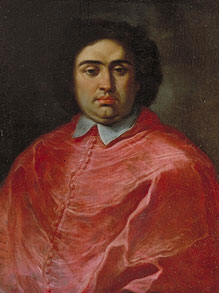 W
WAnnibale Albani was an Italian Cardinal.
 W
WIppolito Aldobrandini was a Catholic Cardinal. He served as Camerlengo of the Holy Roman Church from 1623 to 1638. Pope Clement VIII, whose birth name was also Ippolito Aldobrandini, was his great-uncle.
 W
WPietro Aldobrandini was an Italian cardinal and patron of the arts.
 W
WBenedetto Aloisi Masella was an Italian cardinal of the Roman Catholic Church who served as prefect of the Discipline of the Sacraments from 1954 to 1968, and as chamberlain of the Roman Church from 1958 until his death. Aloisi Masella was elevated to the cardinalate in 1946 by Pope Pius XII, whom he designated to canonically crown Our Lady of Fatima.
 W
WLodovico Altieri was an Italian Roman Catholic cardinal. He served in various capacities under various popes and belonged to a noble Roman house making him a descendant of Pope Clement X.
 W
WFilippo de Angelis was an Italian cardinal of the Roman Catholic Church who served as both archbishop of Fermo from 1842 and camerlengo from 1867 until his death. Angelis was elevated to the cardinalate in 1839.
 W
WSebastiano Baggio was an Italian cardinal, often thought to be a likely candidate for election to the papacy. He served as President of the Pontifical Commission for Vatican City State from 1984 to 1990 and was Prefect of the Sacred Congregation for Bishops from 1973 to 1984.
 W
WAntonio Barberini was an Italian Catholic cardinal, Archbishop of Reims, military leader, patron of the arts and a prominent member of the House of Barberini. As one of the cardinal-nephews of Pope Urban VIII and a supporter of France, he played a significant role at a number of the papal conclaves of the 17th century. With his brothers Cardinal Francesco Barberini and Taddeo Barberini he helped to shape politics, religion, art and music of 17th century Italy. He is sometimes referred to as Antonio the Younger or Antonio Barberini iuniore to distinguish him from his uncle Antonio Marcello Barberini.
 W
WPaolo Bertoli S.T.D. JUD was an Italian Roman Catholic Cardinal and Prefect of the Congregation for the Causes of Saints.
 W
WTarcisio Pietro Evasio Bertone is an Italian prelate and a Vatican diplomat. A cardinal of the Catholic Church, he served as Archbishop of Vercelli from 1991 to 1995, as Secretary of the Congregation for the Doctrine of the Faith, when Cardinal Joseph Ratzinger was Prefect, Archbishop of Genoa from 2002 to 2006, and as Cardinal Secretary of State from 2006 to 2013. Bertone was elevated to the rank of cardinal in 2003. On 10 May 2008, he was named Cardinal-Bishop of Frascati.
 W
WBertrand des Bordes was a bishop of the Diocese of Albi and Roman Catholic Cardinal. He served as Chamberlain of Pope Clement V from 1307 to 1311.
 W
WCarlo Michele Bonelli, Cardinal Alessandrino was an Italian senior papal diplomat with a distinguished career that spanned two decades from 1571.
 W
WRomoaldo Braschi-Onesti was a cardinal of the Roman Catholic Church.
 W
WFrancesco Condulmer was a cardinal of the Roman Catholic Church.
 W
WDomenico Antonio Luigi Pacifico Nicola Baldassare Consolini was an Italian bishop and cardinal, who served as a diplomat of the Holy See.
 W
WPope Alexander IV was head of the Catholic Church and ruler of the Papal States from 12 December 1254 to his death in 1261.
 W
WInnocenzo Cibo was an Italian cardinal and archbishop.
 W
WFrancesco Salesio Della Volpe was an Italian Catholic Cardinal from a noble family. He held the position of secretary of the Congregation of Indulgences and Relics and prefect of the Prefecture of the Pontifical Household. Created cardinal in pectore in 1899, he was named published in consistory of 1901. He was prefect of the Congregation of the Index from January 1911. As protodeacon, he announced the election of cardinal Giacomo Della Chiesa to the papacy at the end of the conclave of 1914.
 W
WGuillaume d'Estouteville, was a French aristocrat of royal blood who became a leading bishop and cardinal. He held a number of Church offices simultaneously. He conducted the reexamination of the case of Jeanne d'Arc and exonerated her of the charges against her. He reformed the Statutes of the University of Paris. In Rome he became one of the most influential members of the Curia, as the official Protector of France in church business. Pope Sixtus IV appointed him Chamberlain of the Holy Roman Church (Camerlengo). His great wealth allowed him to be a generous patron of the arts, especially in the building and adornment of churches.
 W
WPietro Francesco Galleffi (Galeffi) (1770–1837) was an Italian Cardinal.
 W
WPietro Gasparri, GCTE was a Roman Catholic cardinal, diplomat and politician in the Roman Curia and the signatory of the Lateran Pacts. He served also as Cardinal Secretary of State under Popes Benedict XV and Pope Pius XI.
 W
WHyacinthe Sigismond Gerdil, CRSP was an Italian theologian, bishop and cardinal, who was a significant figure in the response of the papacy to the assault on the Catholic Church by the upheavals caused by the French Revolution.
 W
WGiacomo Giustiniani (1769–1843) was an Italian priest, papal diplomat and Cardinal. Considered papabile in the Papal Conclave (1830–31), his election was vetoed by Ferdinand VII of Spain.
 W
WGiovanni Antonio Guadagni – in religion Giovanni Antonio di San Bernardo – was an Italian cardinal and a professed member from the Discalced Carmelites. His rise in the ranks became rapid after his maternal uncle became Pope Clement XII. He was soon after made a cardinal and served in various positions within the Roman Curia.
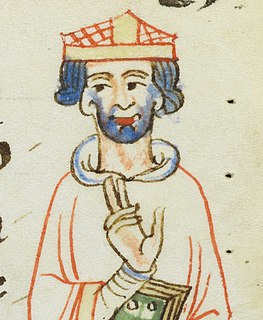 W
WPope Honorius III, born Cencio Savelli, was head of the Catholic Church and ruler of the Papal States from 18 July 1216 to his death. A canon at the Basilica di Santa Maria Maggiore, he came to hold a number of important administrative positions, including that of Camerlengo. In 1197, he became tutor to the young Frederick II. As pope, he worked to promote the Fifth Crusade, which had been planned under his predecessor, Innocent III. Honorius repeatedly exhorted King Andrew II of Hungary and Emperor Frederick II to fulfill their vows to participate. He also gave approval to the recently formed Dominican and Franciscan religious orders.
 W
WLorenzo Lauri was an Italian Cardinal of the Catholic Church who served as Major Penitentiary from 1927 and Camerlengo from 1939 until his death and was elevated to the rank of cardinal in 1926.
 W
WPope Leo XIII was the head of the Catholic Church from 20 February 1878 to his death in 1903. He was the oldest pope, with the exception of Pope Benedict XVI as emeritus pope, and had the third-longest confirmed pontificate, behind those of Pius IX and John Paul II.
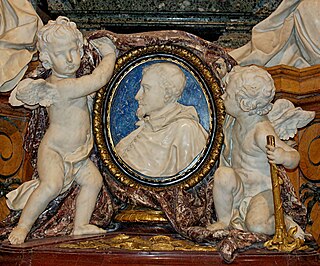 W
WLudovico Ludovisi was an Italian cardinal and statesman of the Roman Catholic Church. He was an art connoisseur who formed a famous collection of antiquities, housed at the Villa Ludovisi in Rome.
 W
WEduardo Martínez Somalo was a Spanish prelate of the Catholic Church who spent most of his career in the Roman Curia, first in the Secretariat of State from 1956 to 1975 and from 1979 to 1988, and then leading two of its principal dicasteries: the Congregation for Divine Worship from 1988 to 1992 and the Congregation for Institutes of Consecrated Life from 1992 to 2004.
 W
WMario Mattei was an Italian Cardinal, of the Roman noble House of Mattei. He became Dean of the College of Cardinals in 1860.
 W
WFrancesco Armellini Pantalassi de' Medici was a cardinal of the Roman Catholic Church. He was a member of the Roman Curia.
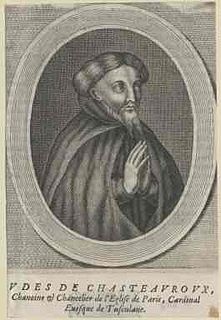 W
WOdo or Eudes of Châteauroux, also known as Odo of Tusculum and by many other names, was a French theologian and scholastic philosopher, papal legate and cardinal. He was “an experienced preacher and promoter of crusades”. Over 1000 of his sermons survive.
 W
WLuigi Oreglia di Santo Stefano was a cardinal of the Catholic Church in the late nineteenth century. He was Bishop of Ostia e Velletri and Dean of the Sacred College of Cardinals from 1896 until his death.
 W
WBartolomeo Pacca was an Italian cardinal, scholar, and statesman as Cardinal Secretary of State. Pacca served as apostolic nuncio to Cologne, and later to Lisbon.
 W
WPaluzzo Paluzzi Altieri degli Albertoni was an Italian Catholic Cardinal and Cardinal-Nephew to Pope Clement X.
 W
WPandulf Verraccio, whose first name may also be spelled Pandolph or Pandulph, was a Roman ecclesiastical politician, papal legate to England and bishop of Norwich.
 W
WCamillo di Pietro J.U.D. was an Italian Cardinal of the Roman Catholic Church and both Camerlengo of the Sacred College of Cardinals and later Camerlengo of the Holy Roman Church.
 W
WPope Pius XII, born Eugenio Maria Giuseppe Giovanni Pacelli, was head of the Catholic Church and sovereign of the Vatican City State from 2 March 1939 until his death in 1958. Before his election to the papacy, he served as secretary of the Department of Extraordinary Ecclesiastical Affairs, papal nuncio to Germany, and Cardinal Secretary of State, in which capacity he worked to conclude treaties with European and Latin American nations, such as the Reichskonkordat with Nazi Germany.
 W
WCarlo Rezzonico was a cardinal of the Roman Catholic Church. He is sometimes referred to as The Younger to distinguish him from his uncle Pope Clement XIII who also bore the name Carlo Rezzonico.
 W
WTommaso Riario Sforza was the Neapolitan Cardinal who, as protodeacon, announced at the end of the 1846 conclave the election of Cardinal Giovanni Mastai-Ferretti as Pope Pius IX.
 W
WRaffaele Sansoni Galeoti Riario was an Italian Cardinal of the Renaissance, mainly known as the constructor of the Palazzo della Cancelleria and the person who invited Michelangelo to Rome. He was a patron of the arts. He was also the first adolescent to be elevated in the College of Cardinals in the history of the Holy See.
 W
WGuido Ascanio Sforza di Santa Fiora was an Italian cardinal, known also as The cardinal of Santa Fiora.
 W
WJean-Louis Pierre Tauran was a French cardinal of the Catholic Church. When he died, he had been the president of the Pontifical Council for Interreligious Dialogue since 2007 and Camerlengo of the Holy Roman Church since the end of 2014. He was made a cardinal in 2003 and was the Cardinal Protodeacon from 2011 to 2014. His earlier career included almost thirty years in the diplomatic service of the Holy See and several years as the Vatican's chief archivist and librarian.
 W
WAntonio Tosti was Catholic Cardinal-Priest of San Pietro in Montorio in Rome and later Camerlengo of the Sacred College of Cardinals and Librarian of the Vatican Library.
 W
WLudovico Trevisan was an Italian catholic prelate, who was the Camerlengo of the Holy Roman Church, Patriarch of Aquileia and Captain General of the Church. He succeeded his rival Giovanni Vitelleschi, a fellow cardinal of military talent and inclination, as Bishop of Traù and Metropolitan Archbishop of Florence. Trevisan was also known as the Cardinal of Aquileia and the Cardinal Camerlengo.
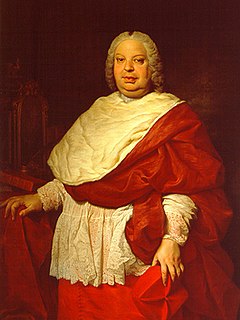 W
WSilvio Valenti Gonzaga was an Italian nobleman and Catholic cardinal.
 W
WJean-Marie Villot was a French prelate and Cardinal of the Roman Catholic Church who served as Archbishop of Lyon from 1965 to 1967, Prefect of the Congregation for the Clergy from 1967 to 1969, Vatican Secretary of State from 1969 to 1979, and Camerlengo of the Holy Roman Church from 1970 to 1979. He was made a cardinal in 1965.